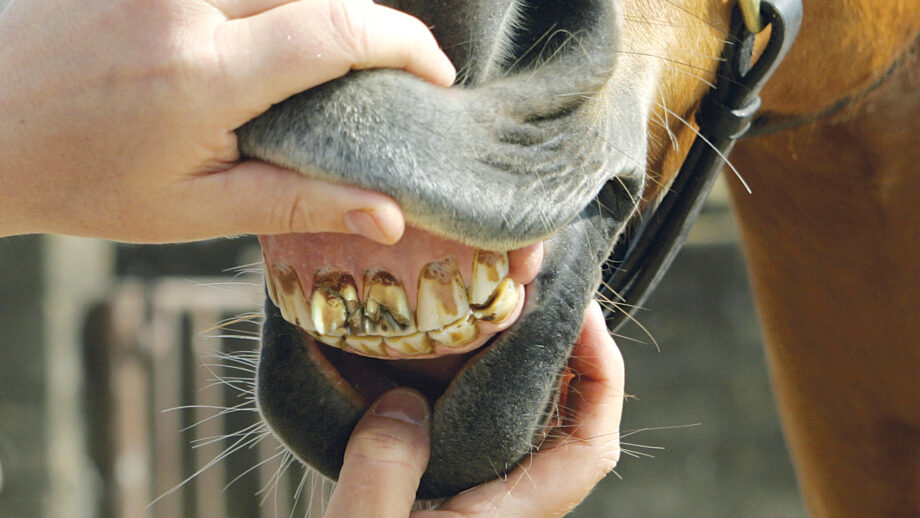Q: My horse injured his jaw in an accident in the field, fracturing three of his teeth. I understand that dental fillings can be performed on hollow or chipped equine teeth. Is this common? And can a filling be used to fill a gap between two incisors?
GC, Borders
Equine dental filling — or endodontic treatment — is not performed as commonly in equines as in human dentistry, or in small animal dentistry, according to Professor Paddy Dixon, Professor of Equine Surgery at the Royal (Dick) School of Veterinary Studies at The University of Edinburgh.
“This is largely due to the different anatomy and larger size of equine teeth, which consequently have fewer requirements for endodontic treatment,” he explained.
“There are, however, some situations where such treatment is suitable for horses, such as for treating fractured incisors that have exposure of the pulp — the inner structure of the tooth, consisting of nerve and blood vessels.
“A few universities and equine practices in the UK have trained personnel and equipment to allow these procedures to be performed,” said Professor Dixon.
“If successful, treatment will allow the fractured tooth to survive, and in time it will likely erupt back to the level of the other teeth.”
Professor Dixon told H&H that such fillings can also be performed in non-fractured incisors with exposed pulp, or hollow defects in the tooth, but that the procedure is not suitable for filling gaps between front teeth.
“Crowns, or fillings placed in spaces between incisors, is not feasible because of the massive and constant forces the horse places on its incisors when grazing, and especially when pulling hay from a net — this action would dislodge the strongest crown,” he said.
“Although spaces between the incisors may be unsightly if large, such wide spaces rarely cause the horse any problems.
“Other instances where dental fillings are used in horses include to fill defects in the ‘cups’ of the upper cheek teeth, especially in horses that are likely to develop fractures of a weakened tooth,” he said.
“These cheek teeth may need X-ray evaluation before treatment, as the defects may extend very deeply into the reserve crown and root area. Such specialised work should only be performed by a vet.
“Although these types of treatment are becoming more popular in equine dentistry, it should be noted they are a relatively new procedure and as yet, no critical large studies have been published to confirm their benefit to the horse’s oral health in the longer term.”
Information
Royal (Dick) School of Veterinary Studies www.vet.ed.ac.uk
The British Equine Veterinary Association www.beva.org.uk
This Q&A was first published in Horse & Hound (1 January, ’09)



